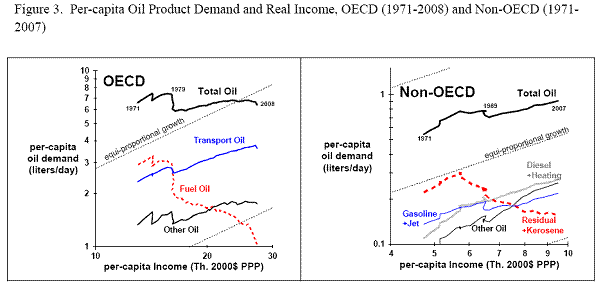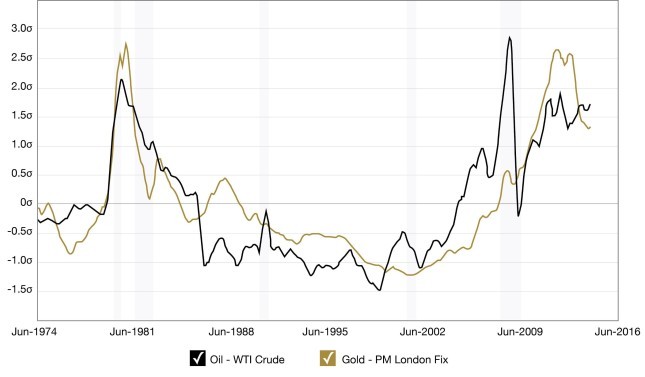Oil Markets Trouble Ahead Trouble Behind
Post on: 16 Март, 2015 No Comment

Oct 10, 2014
On the surface, the easy and conventional explanation for the recent drop (20% since June) in oil prices — even in the face of heightened geopolitical risk/unrest in key oil producing regions — has focused mainly on the growth in supply (especially in the United States), lackluster global demand, and sizable global inventories. In combination, this trifecta has led market analysts to be both complacent (to date, this unrest has not impeded production volumes) and more recently, bearish. U.S. liquids production continues to grow; Russian exports, even in the face of sanctions remain high, and Iraq and Iran continue to export even as Libyan volumes go up and down.
Given that the market had already factored in the continued U.S. tight oil surge, the real surprise has come in the form of demand loss. At the beginning of the year, many analysts predicted that non-OPEC supply gains would cover the majority of new demand growth, which though viewed as tepid, was still projected to be over 1.2 million barrels per day (mmb/d). Newer forecasts, however, show appreciably weaker growth (on the order of 700-800mb/d) and the reduction so far is concentrated in the second and third quarters, setting up potential problems for a well-supplied market, especially in a slow or no growth global scenario going forward.
For the past several years, this confluence of factors has largely explained why oil prices have remained in a predictably stable price band of around $100/barrel — in spite of an unprecedented spate of global disruptions and new geopolitical unrest. The continued demand for oil and price stability has been good for consumers and recovering economies. It has also been keenly beneficial for producer/investors in the United States and elsewhere.
Today, however, we may be on the cusp of a much more volatile and unpredictable era, where prices may plummet or spike, where political unrest can both impact and be impacted by such adjustments, where lower demand and supply and inventory overhangs can lead to future underinvestment, and where reinvestment is likely to lag new demand growth, triggering a new round of price spikes and troughs out into the future.
In order to fully appreciate this changing landscape, one only need examine the following:
- Demand vs. consumption and the impact of inventories. Simply put, large stock accumulation (whether the result of hedging against broader political crises or a symptom of having no market for unsold barrels) may be leading analysts to continue to overstate demand growth. To the extent this is the case, once storage capacity is full (including line fill in the case of pipeline projects), even if demand strengthens as a consequence of lower oil prices, inventory draw may be used to match that consumption, giving producers little near term price relief.
- The real elasticity of demand. In addition, under such conditions, the income effect of a weakened global economy is unlikely to quickly correct the downturn when it occurs, thereby pushing lower prices into 2015. That correction mostly comes from discretionary OECD demand and non-OECD exporters that serve the OECD.
- Price sensitivity of new drilling. While drilling efficiency in the United States, in particular, has been remarkable, unconventional production costs still exceed those of conventional onshore projects. They also have much steeper decline rates and lower recovery rates (at least to date). Sustained low prices are likely to deter/delay new investments and the churning (i.e. continuous drilling) required to keep volumes high could, at some point, be overtaken by declines.
- The impact of sanctions. Sanctions targeting the oil output from major producing regions or nations may ultimately have the desired effect of modifying regime behavior, but it can also adversely impact global supply, prices and continued economic growth. In the near term, however, given current market conditions, keeping additional oil off the market may actually prevent more precipitous price declines.
- The capex/opex conundrum. Between 2008-2013, scores of independents and larger companies as well, sought to take advantage of the shale boom in the United States and undertook substantial capital investments to secure large parcels of lease acreage. These expenditures constituted sizable upfront costs and led to debt accumulation. With lower commodity prices, delayed or reduced operating income makes that model difficult to sustain. And while it is true that farm-ins, new equity participation and property sales may reinvigorate/renew the cycle, shedding of unproductive properties and asset write downs are also possible and increasingly likely.
- Greater regulatory pressures. Reduced prices and increased costs compress profit margins and make new investment decisions tougher. Policy decisions that restrict market choices and create distortions (e.g. export restrictions) add to that uncertainty.
- The prospect of a continued U.S. bonanza. This may be the trickiest impact to quantify, but the prospect/perception of global oil (and gas) markets being flooded by a continued and growing stream of American unconventional exports eventually will lead competitors to second guess the commercial viability of new investments elsewhere — either in non-U.S. refining, East African gas efforts, international light oil development, or high cost and complex frontier projects. And with global consumption expected to grow over the next several decades, we will need a plethora of new and large scale efforts to meet that demand, especially as conventional and unconventional output declines take hold.

In the short term, over supply and lower oil prices clearly have some positive impacts. They are good for economies and consumers, helpful for sanctions efforts against rogue states, and serve as buffers against continued political unrest and supply disruptions around the globe.
But they also carry the seeds for future troubles, including underinvestment in efficiency and alternative energy forms as well as in future oil and gas, potential instability in resource rich nations dependent on oil and gas revenue, have mixed climatic impacts, and eventually lead to higher prices.
A number of pre-eminent foreign policy scholars have described the current geopolitical environment as one of unprecedented risk and uncertainty, with conflicts and realignments that make take years/decades to sort out. And while this note has laid out a case for the disruptive impacts of sustained lower prices, the prospect of near term price spikes and temporarily higher prices (given underlying conditions in Yemen, Russia/Ukraine, Iran, Iraq, Syria, Libya, etc.) clearly cannot be discounted.
What is clear is that the energy landscape continues to change, and when coupled with the range of implications of a reordered/realigned world, the troubles of the past may look tame compared to the possible troubles that lie ahead.
Frank A. Verrastro is senior vice president and James R. Schlesinger Chair for Energy & Geopolitics at the Center for Strategic and International Studies in Washington, D.C; Guy Caruso is senior advisor at the Energy & National Security Program at CSIS; and Lawrence Goldstein is a non-resident senior associate with the CSIS Energy & National Security Program.
Commentary is produced by the Center for Strategic and International Studies (CSIS), a private, tax-exempt institution focusing on international public policy issues. Its research is nonpartisan and nonproprietary. CSIS does not take specific policy positions. Accordingly, all views, positions, and conclusions expressed in this publication should be understood to be solely those of the author(s).
2014 by the Center for Strategic and International Studies. All rights reserved.














